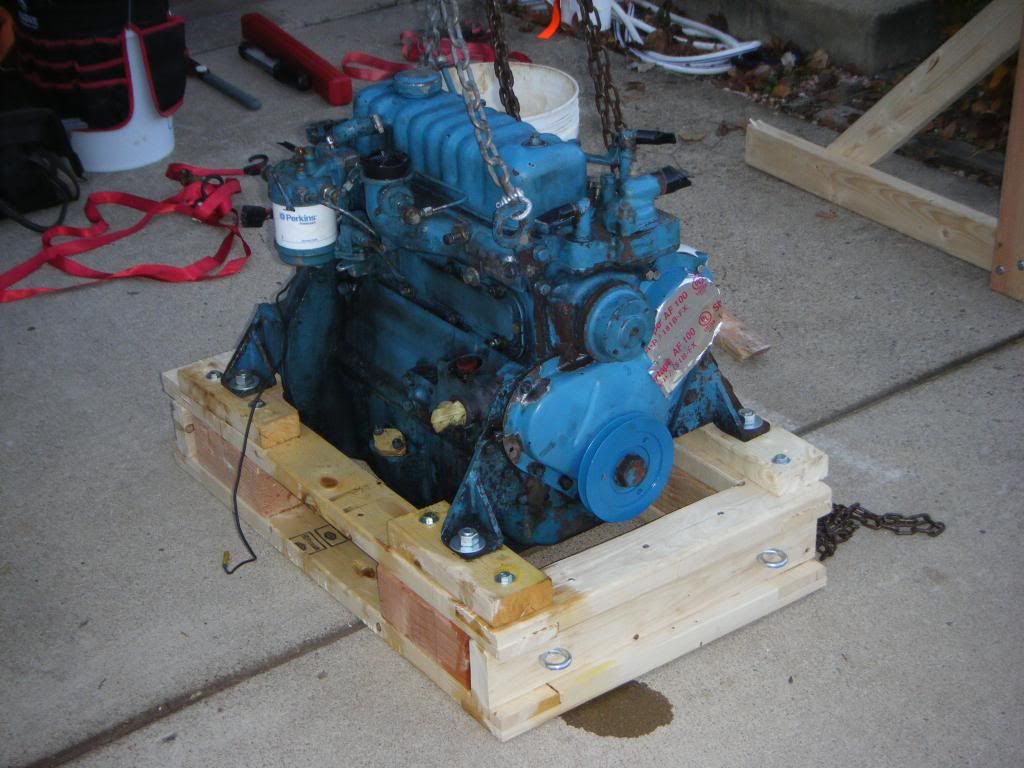This Ought to Keep Me Busy...
So, glutton for punishment that I am, I've started a winter project:
![Image]()
That's our aux -- a reliable Perkins 4.108M that (as you can tell from the staining) has developed a bit of an oil leak problem that is even high by Perkins standards. We also were getting a pretty noticeable exhaust stain on the stern, which didn't indicate good things...
After a lot of deliberation about whether or not to repower, I decided to bring this lump home to tear her down and see just how bad is is. I'll do a complete inspection, measuring the components against workshop manual specs, to see what all needs to be replaced.
At this point, I figure that at best I can get by with a top end job. If the cylinders liners show significant wear, then those'll need to be replaced.
The deal breakers will be if the block, crank, head or other major components need to be replaced.
Stay tuned...
What fun!
So, glutton for punishment that I am, I've started a winter project:

That's our aux -- a reliable Perkins 4.108M that (as you can tell from the staining) has developed a bit of an oil leak problem that is even high by Perkins standards. We also were getting a pretty noticeable exhaust stain on the stern, which didn't indicate good things...
After a lot of deliberation about whether or not to repower, I decided to bring this lump home to tear her down and see just how bad is is. I'll do a complete inspection, measuring the components against workshop manual specs, to see what all needs to be replaced.
At this point, I figure that at best I can get by with a top end job. If the cylinders liners show significant wear, then those'll need to be replaced.
The deal breakers will be if the block, crank, head or other major components need to be replaced.
Stay tuned...
What fun!






